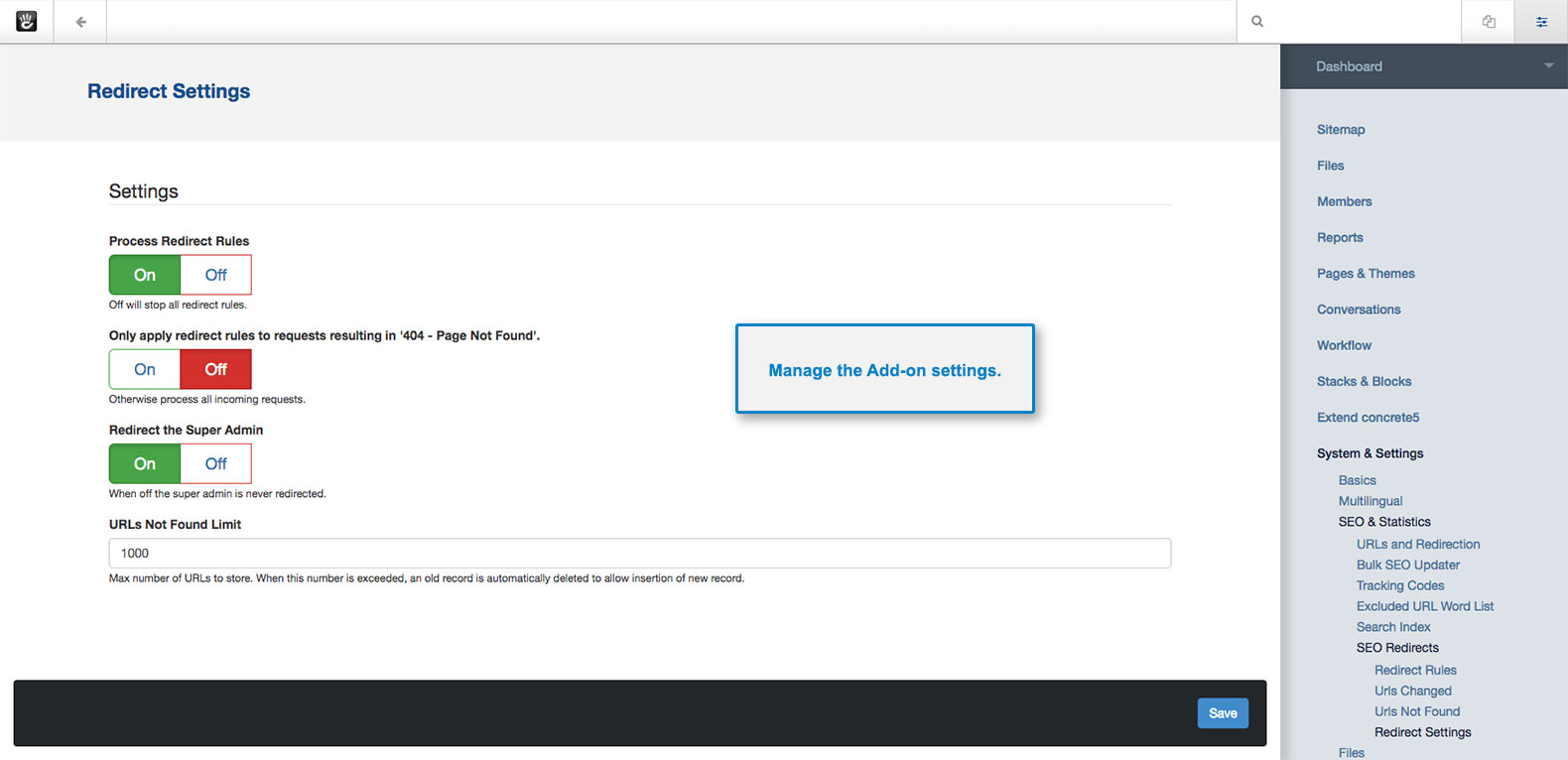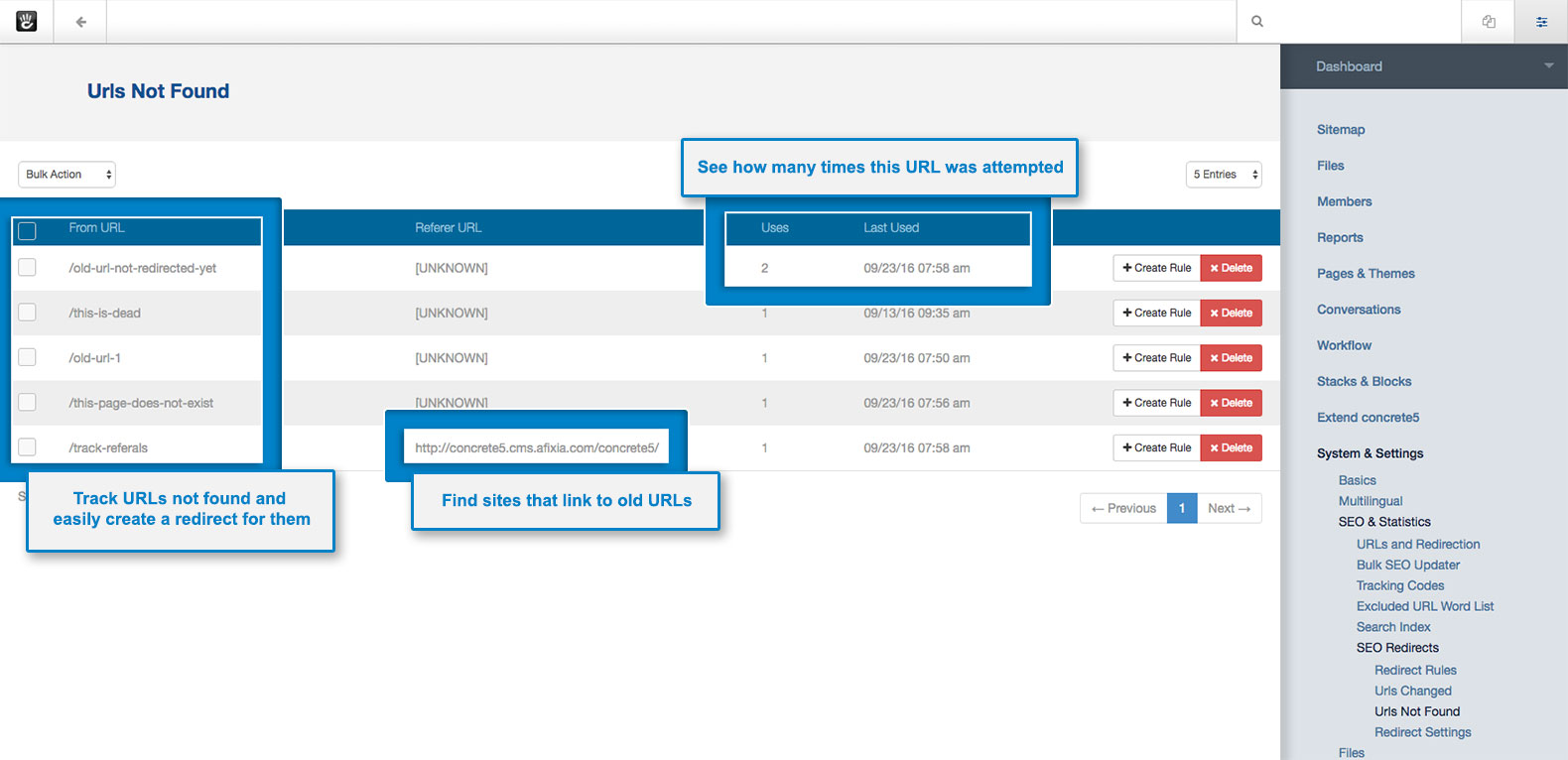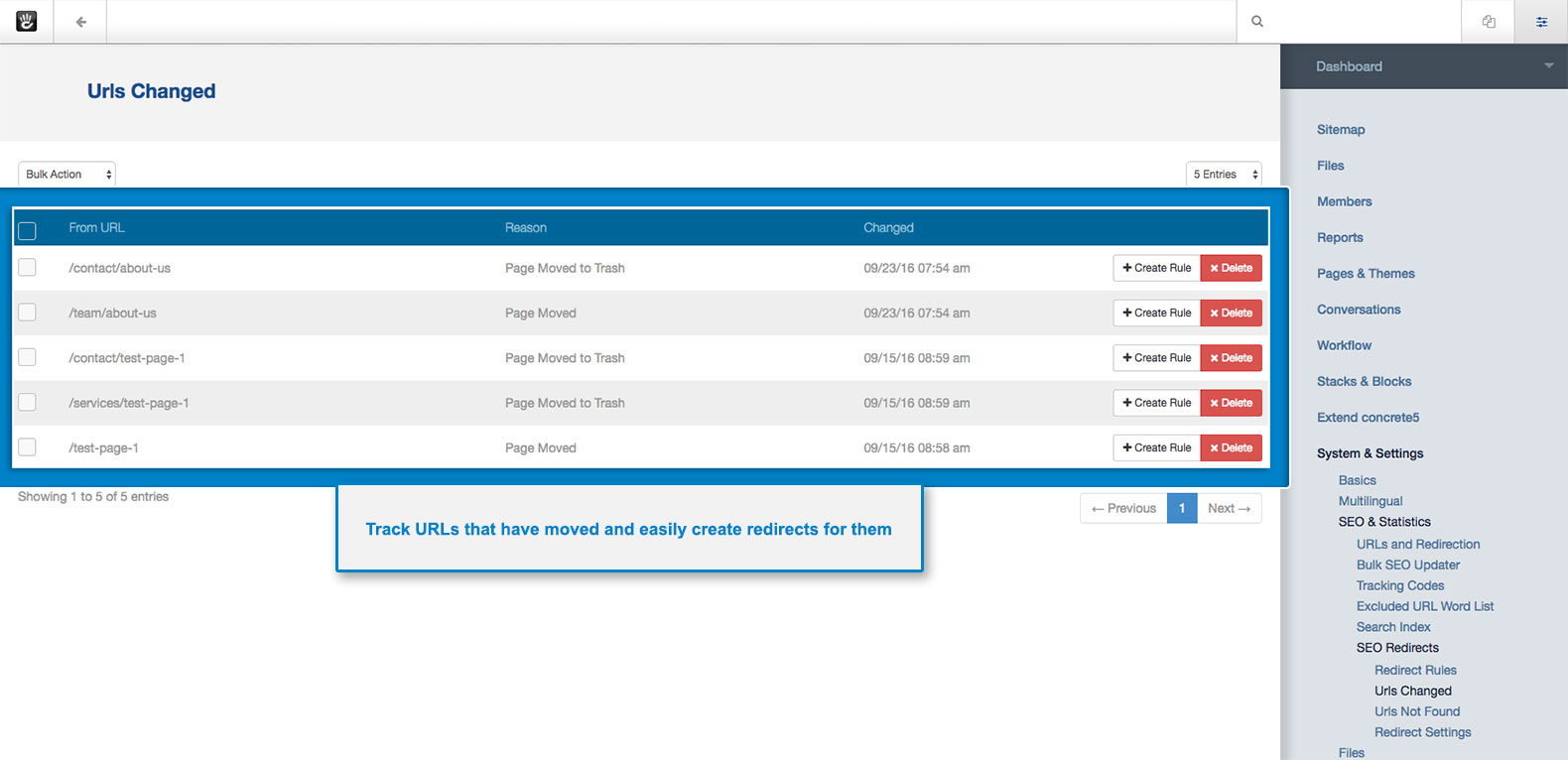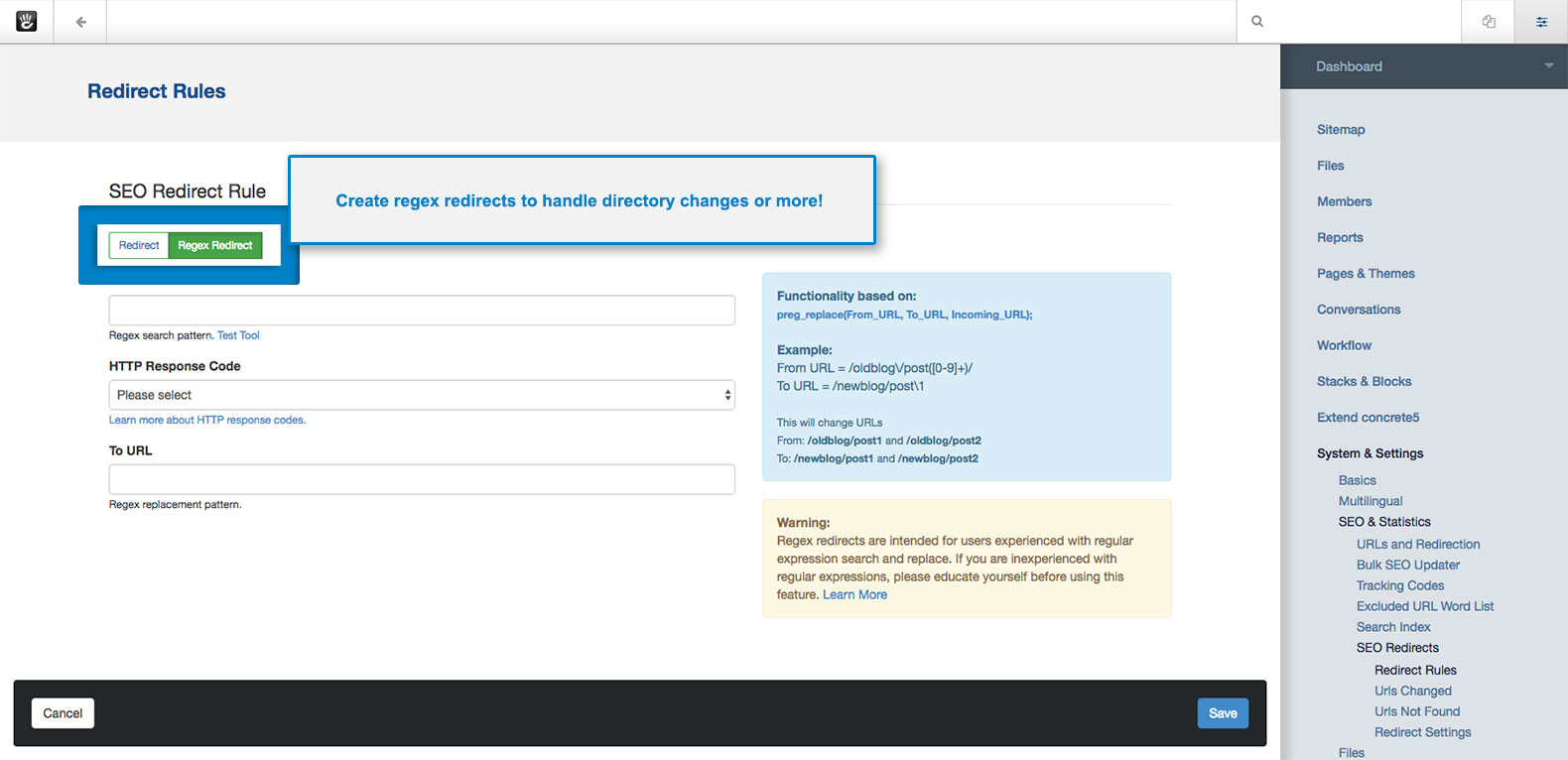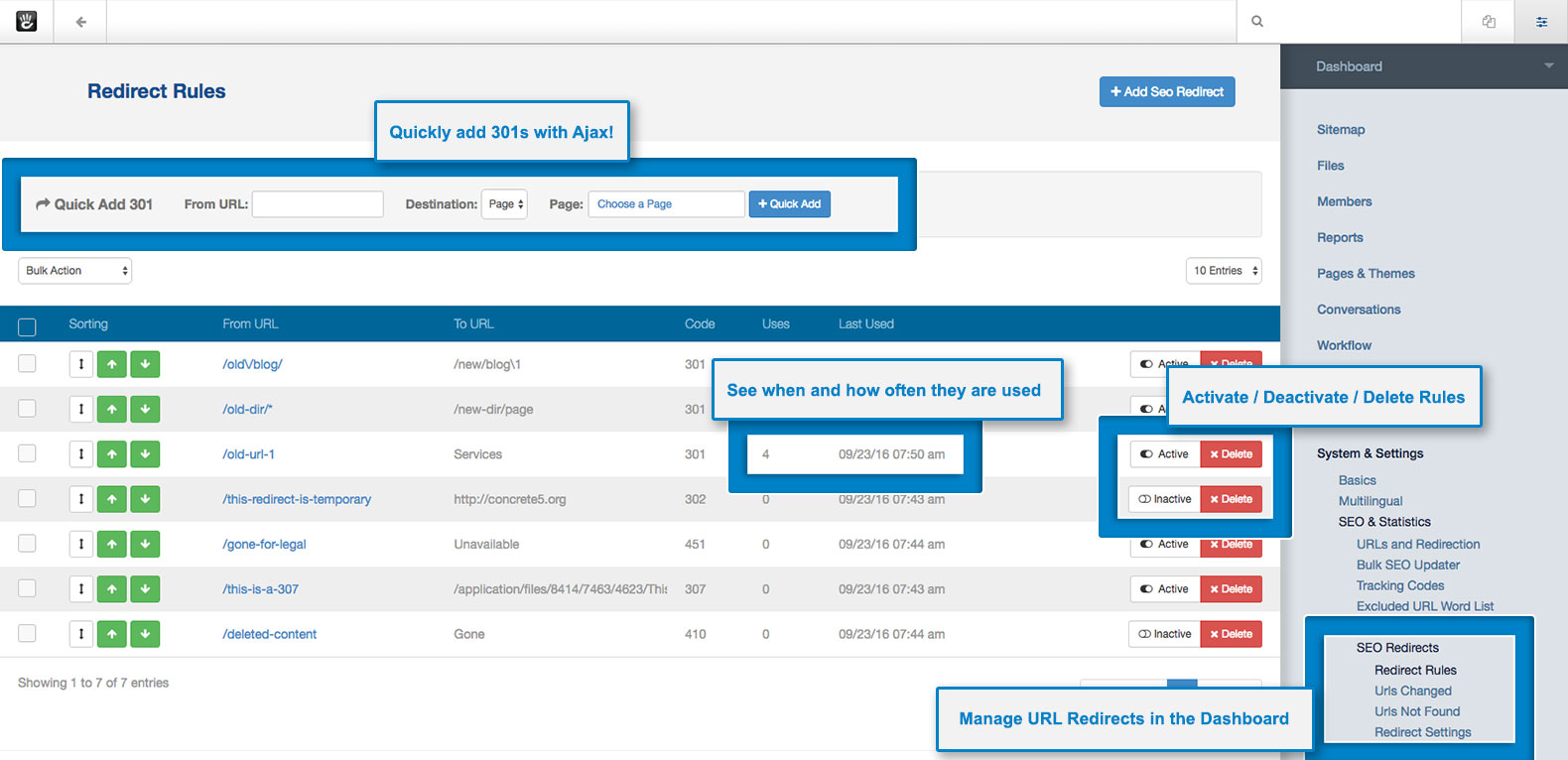Afixia SEO Redirects
SEO Redirects for Website Management.
SEO Redirects Plugin for Website Management
The SEO Redirects plugin is an essential tool for quickly transferring a website or managing your site's links post-URL update or deletion. It simplifies the process of creating SEO-friendly redirect rules, eliminating the need for manual .htaccess file editing or reliance on inadequate tools. This plugin is indispensable for maintaining link integrity during site migrations, ensuring ongoing SEO health, and avoiding dead links in search engine results.
Features and Options:
- Multiple Redirect Options: Supports 301 (permanent), 302 (temporary), 307 (temporary redirect for HTTP 1.1), 410 (gone), and 451 (unavailable for legal reasons) redirects, along with wildcard and regex capabilities for comprehensive link management.
- Easy Redirect Creation: Features a quick ajax 301 redirect builder, along with a more detailed builder for all supported status codes.
- Integration with Concrete: Utilizes Concrete's page or file selector for straightforward redirect setup.
- Data Monitoring: Collects and monitors data on 404 errors, page movements, deletions, and file deletions.
- Rule Management: Enables activation or deactivation of redirect rules and prioritization through a drag-and-drop interface.
- Usage Tracking: Includes a built-in counter to monitor the frequency of individual redirect rule triggers.
- Access to SEO Tools: Provides a simple SEO Tools Page for easy access to all of Concrete's SEO functionalities.
- Bulk Actions: Allows for the bulk activation, deactivation, and deletion of redirect rules.
- Backup and Import: Supports the import, backup, and restoration of redirect rules via CSV for efficient management.
- Customizable Settings: Offers on/off settings for redirect rule processing, application of redirects solely to 404 errors, redirection of Super Admin, and a limit for 'URLs Not Found' to prevent database bloating from malicious bot activity.
- Subfolder Installation Support: Accommodates Concrete installations in subdirectories.

